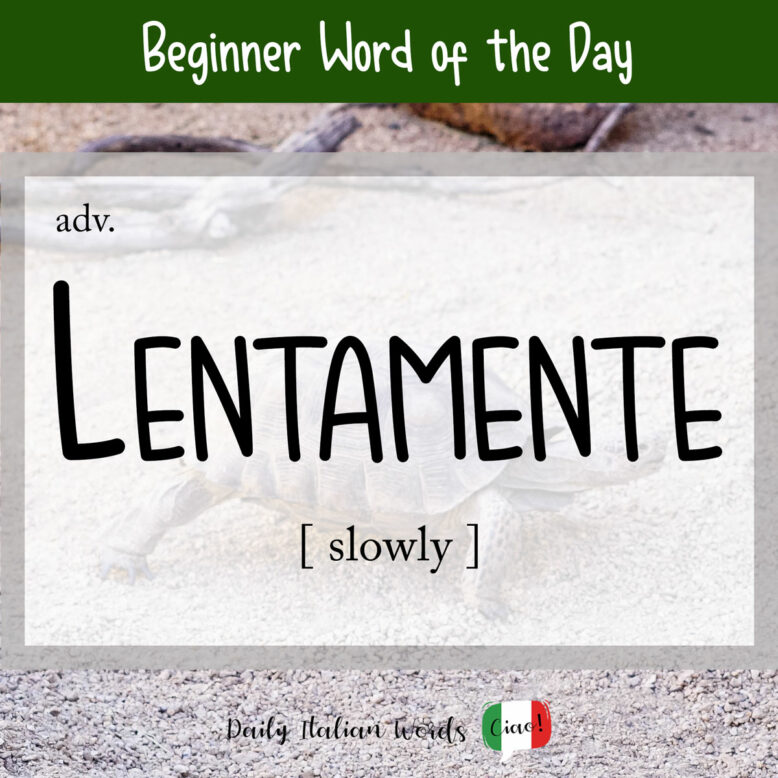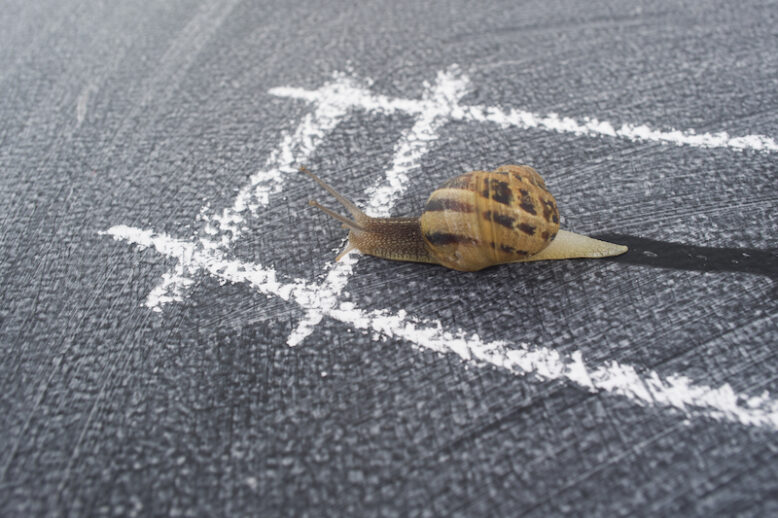In order to say slowly in Italian, all you have to do is take the feminine singular form of the adjective lento (slow) and add on the suffix -mente (which means -ly) to produce the adverb lentamente.

Cammino lentamente perché mi fa male la gamba.
I’m walking slowly because my leg hurts.
An adverb that can replace lentamente in almost every instance is piano. The difference is that the sole translation for lentamente is slowly whereas piano is a multifaceted term that can mean slowly, softly, cautiously, quietly or delicately depending on the context.
mangiare lentamente = to eat slowly
camminare lentamente = to walk slowly
andare lentamente = to go slowly
mangiare piano = to eat slowly
camminare piano = to walk slowly
andare piano = to go slowly
Piano is also used more when giving instructions or commands, probably because it is shorter and easier to blurt out quickly (e.g. Vai piano! = Go slowly!).

Quite often, piano is repeated for emphasis, creating the expressions piano piano / pian piano / pian pianino. They can also be used figuratively to mean little by little.
Mi raccomando, versa la crema piano piano.
Please, make sure you pour the cream slowly.
Pian pianino, il nostro negozio si è fatto conoscere in tutta la città.
Little by little, our shop become well-known all across town.
There is also the expression Chi va piano, va sano e va lontano, which literally translates as “he who goes slowly, goes healthily and goes far”. The English equivalent is Slow and steady wins the race.

Another synonym is adagio which means slowly or unhurriedly.
Parla adagio o non ti capirà nessuno!
Speak slowly or no one will understand you!
Other ways to say slowly in Italian include:
- a passo di lumaca = at a snail’s pace
- con calma = calmly
- tranquillamente = easily
Heather Broster is a graduate with honours in linguistics from the University of Western Ontario. She is an aspiring polyglot, proficient in English and Italian, as well as Japanese, Welsh, and French to varying degrees of fluency. Originally from Toronto, Heather has resided in various countries, notably Italy for a period of six years. Her primary focus lies in the fields of language acquisition, education, and bilingual instruction.


